In search of the perfect pose? Google “common yoga pose mistakes” and you’ll find myriad photos, diagrams, and charts telling you to “do this, not this,” for pretty much every asana you might want to master. There’s no shortage of advice out there, granted some of it is better than others.
All these specific dos and don’ts can be a lot to remember though, particularly within the flow of a class.
To make it simple, here are seven guidelines that will help you avoid many of the most common asana mistakes, while also teaching you the basics of healthy postural alignment you can apply to virtually any style of yoga you love to practice.
1. BUILD YOUR POSE FROM THE GROUND UP
Like any sound building, every solid yoga pose begins with a well-aligned and balanced foundation. The foundation, where your pose meets the earth, is the starting point for building a pose that has integrity. It deserves your attention in each and every pose you practice.
In general, you want to the foundation of your pose, whether it’s the feet, hands, pelvis, or any other part of the body, to be evenly weighted balanced both side-to-side and front to back.
For example, to balance the foundation of the sitting pose below, you would rock slowly side to side, and then front to back a few times, until you find the center point, where the two buttock bones feel evenly weighted.
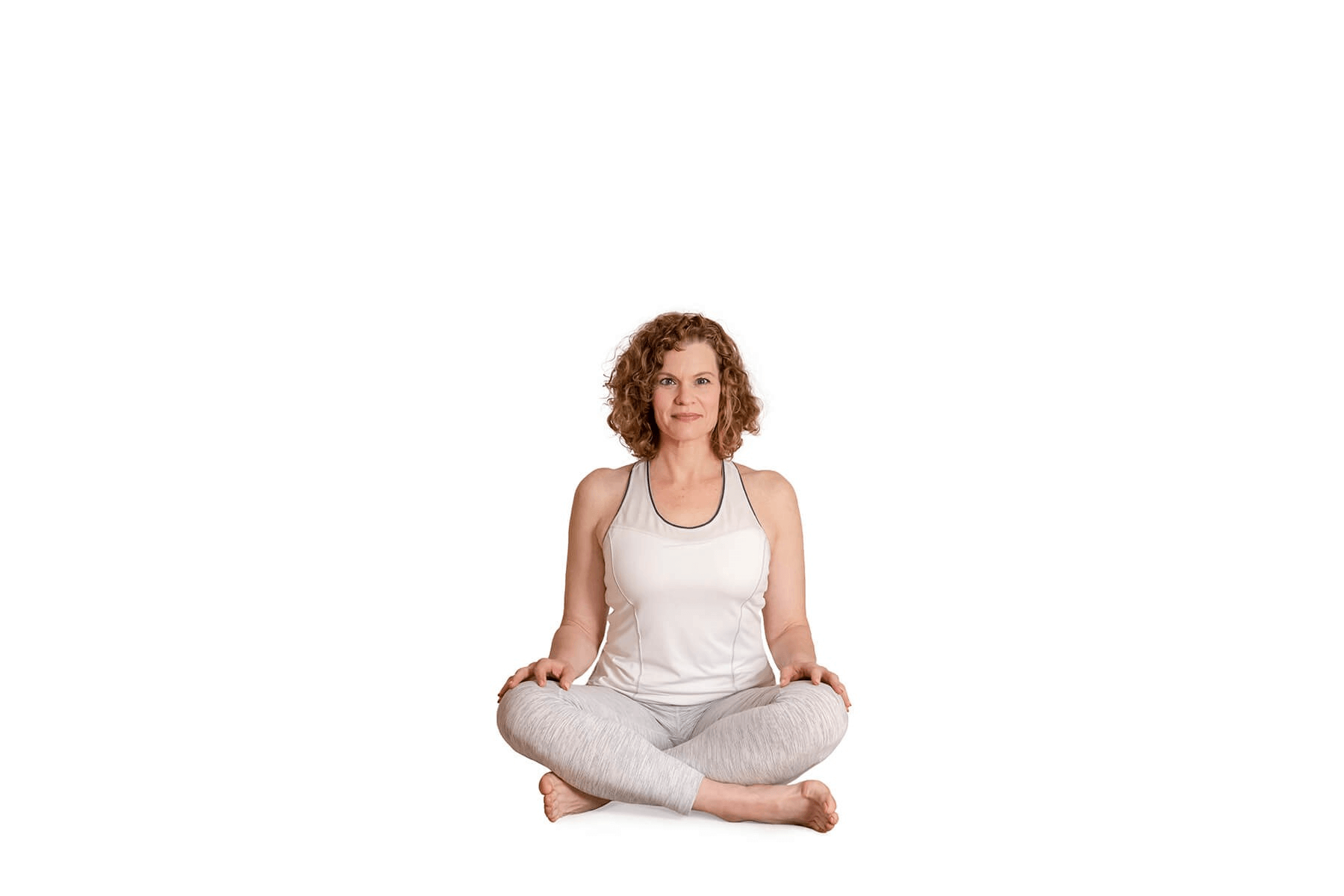
When your feet are the foundation, as in a standing pose, balance the weight of your feet in these places:

When the hands are part of your foundation, as in downward-facing dog pose, balance these points:
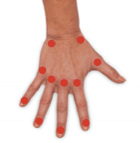
2. ADAPT THE POSE TO MEET YOUR BODY, NOT THE OTHER WAY AROUND
Here’s where props, modifications, and variations come in.
Use them. Do them.
Bolsters, blocks, straps, blankets, and walls allow you to adapt your poses to meet your body where it is with balance and integrity. Props support the body, create space, afford stability, and help you maintain healthy alignment.
Here are just a few of the many ways props support your practice:
If you’re not feeling steady enough to manage tree pose in the middle of room, go to a wall:
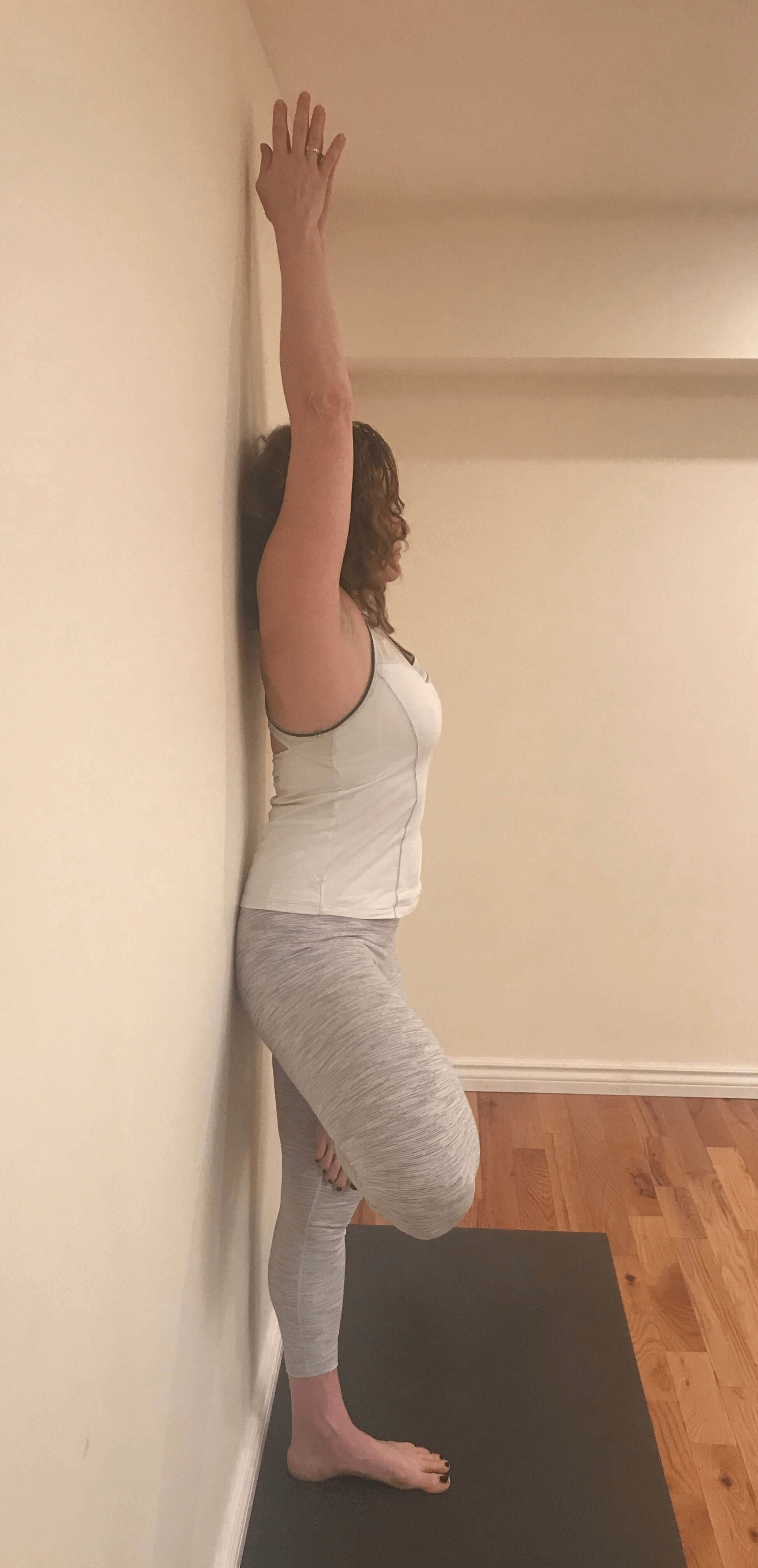
If your lower back rounds when you sit on the floor, sit up on a blanket or two:
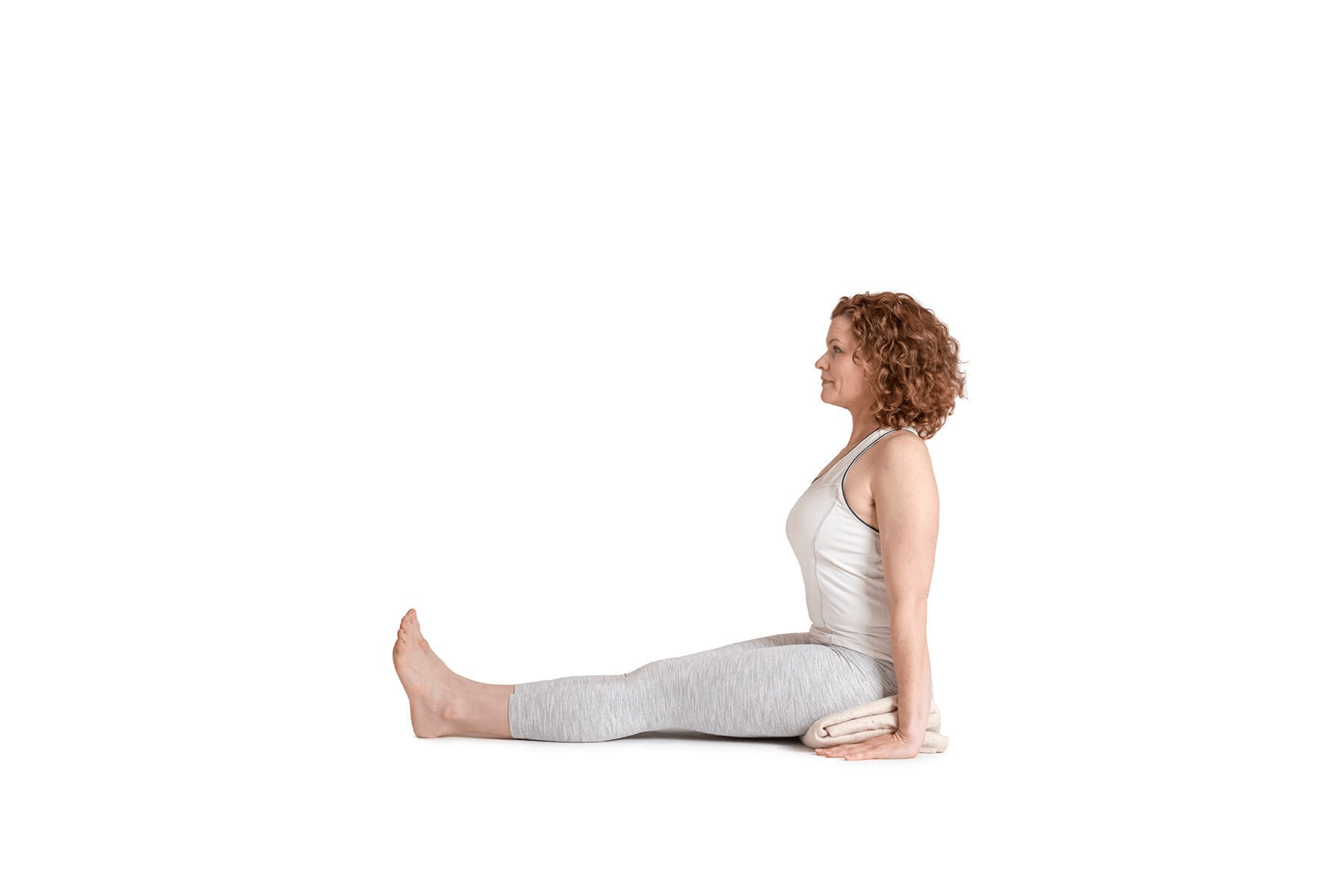
If you can’t straighten your leg in Supta padangusthasana, use a strap:
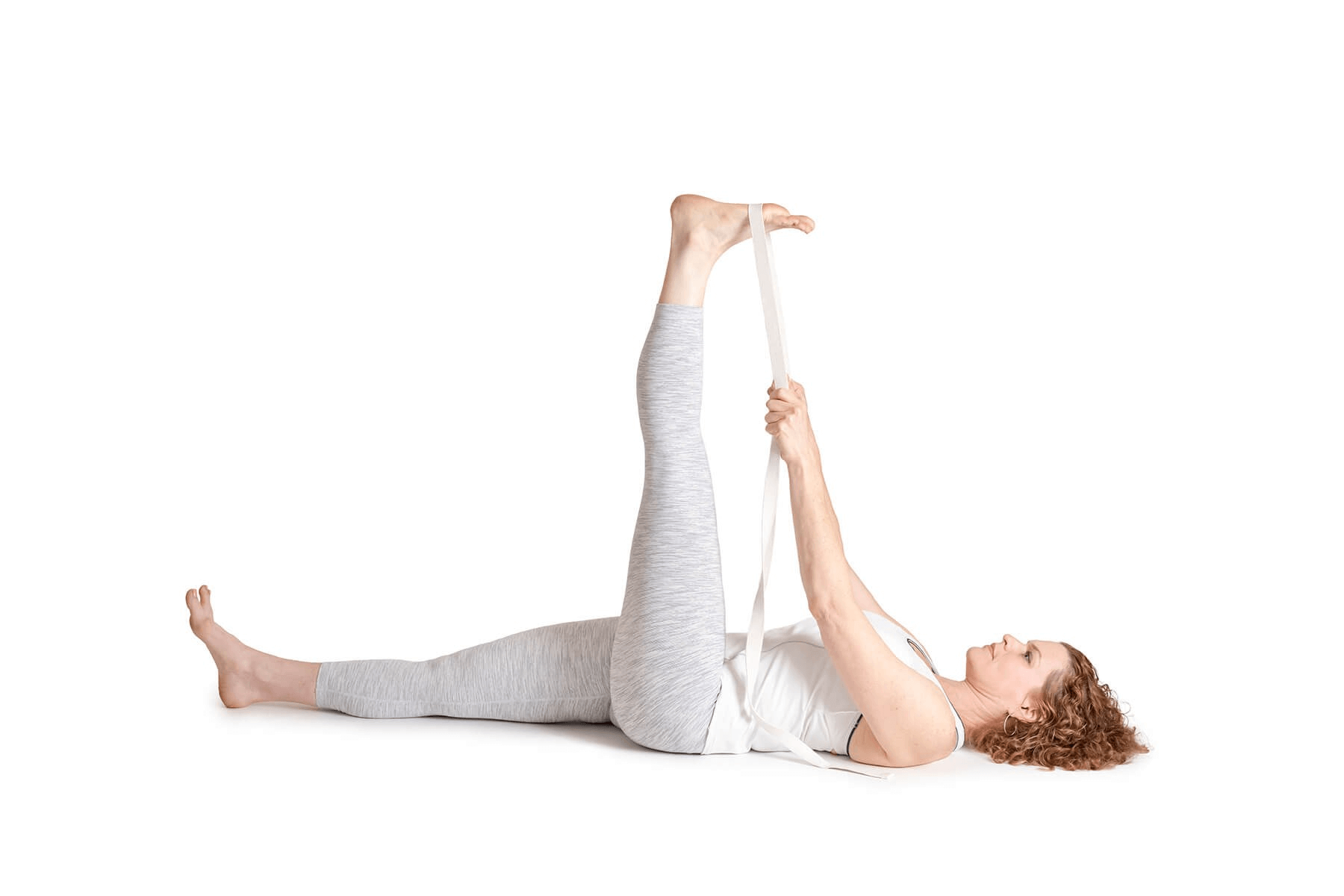
While it might be a challenge to ask for help, or even to acknowledge that a pose you’re in doesn’t feel good, it’s a mistake to think that any of this is “cheating” or taking the easy way out. To the contrary, adapting your pose for where your body is at allows you to work more deeply and without strain.
Prop variations and pose modifications teach you how to create the beneficial and necessary actions on your own that allow you to move toward the full pose forms over time.
If your teacher doesn’t regularly offer pose options, you might consider finding a teacher you can learn modifications from, or taking a class that’s more basic than the one you usually attend to learn how to adapt your poses.
3. PRIORITIZE ALIGNMENT, ACTION AND EXTENSION THROUGH THE CENTER BEFORE THE PERIPHERY
Why is this downward-facing dog pose:
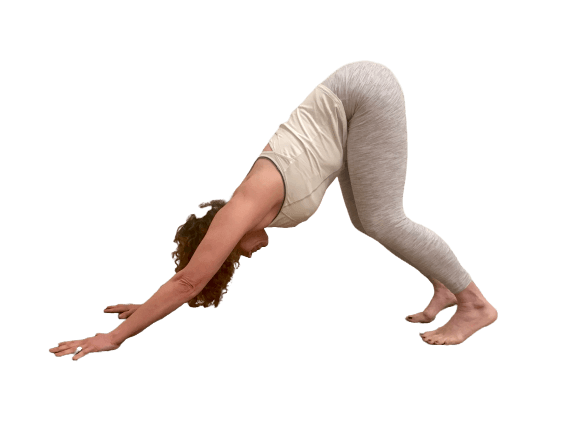
Preferable to this downward-facing dog pose?
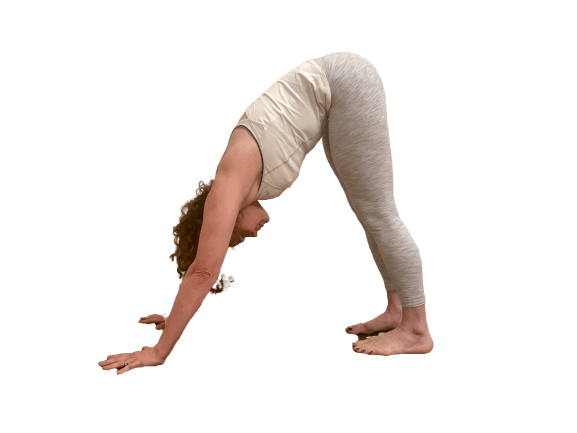
Because although the knees are bent and the heels are off the floor in the first photo, the spine is well extended, whereas it is more rounded in the second photo. While the first variation may look further from the downward-facing dog pose we know, it’s actually more beneficial.
Alignment, action, and extension should move from center of the body out through the periphery.
Don’t worry about getting your heels down to the floor in downward-facing dog pose until your hips and hamstrings are flexible enough to allow that to happen without sacrificing the length through the spine. (Learn more in Achieving Your Best Downward-Facing Dog.)
By backing off the periphery of the pose to extend through the spine first, you benefit from much of the back body stretch through the shoulders and upper back, while taking pressure off your arms, wrists, and hands.
Here are a few other examples of this principle applied to some common poses:
If your torso rounds forward over your front leg forward in triangle pose, taking your hand to your shin or a block instead of the floor will allow the spine and torso to lengthen even if your back and legs are tight:
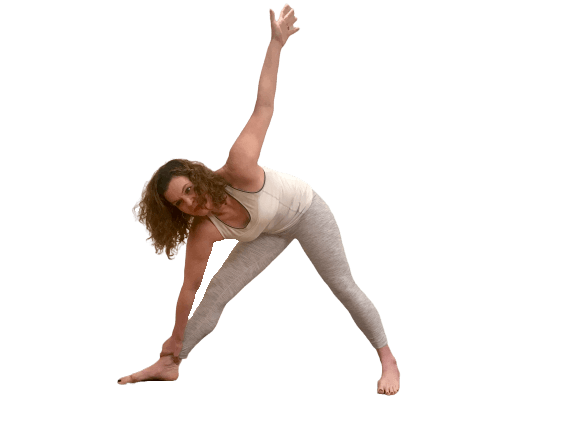
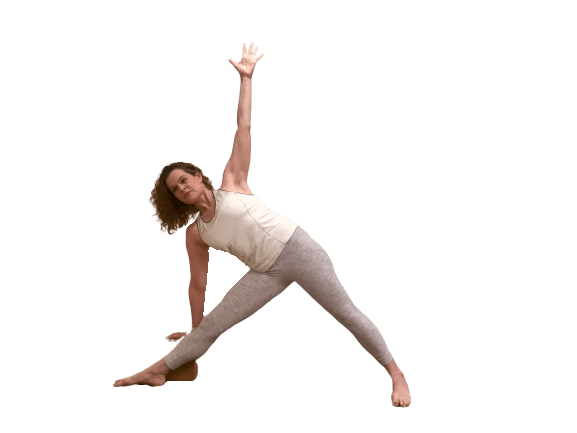
Coming up into cobra pose will allow you to stabilize the upper back muscles before before pressing up to lift the chest into upward-facing dog pose, taking undue pressure off your wrists and shoulder joints.
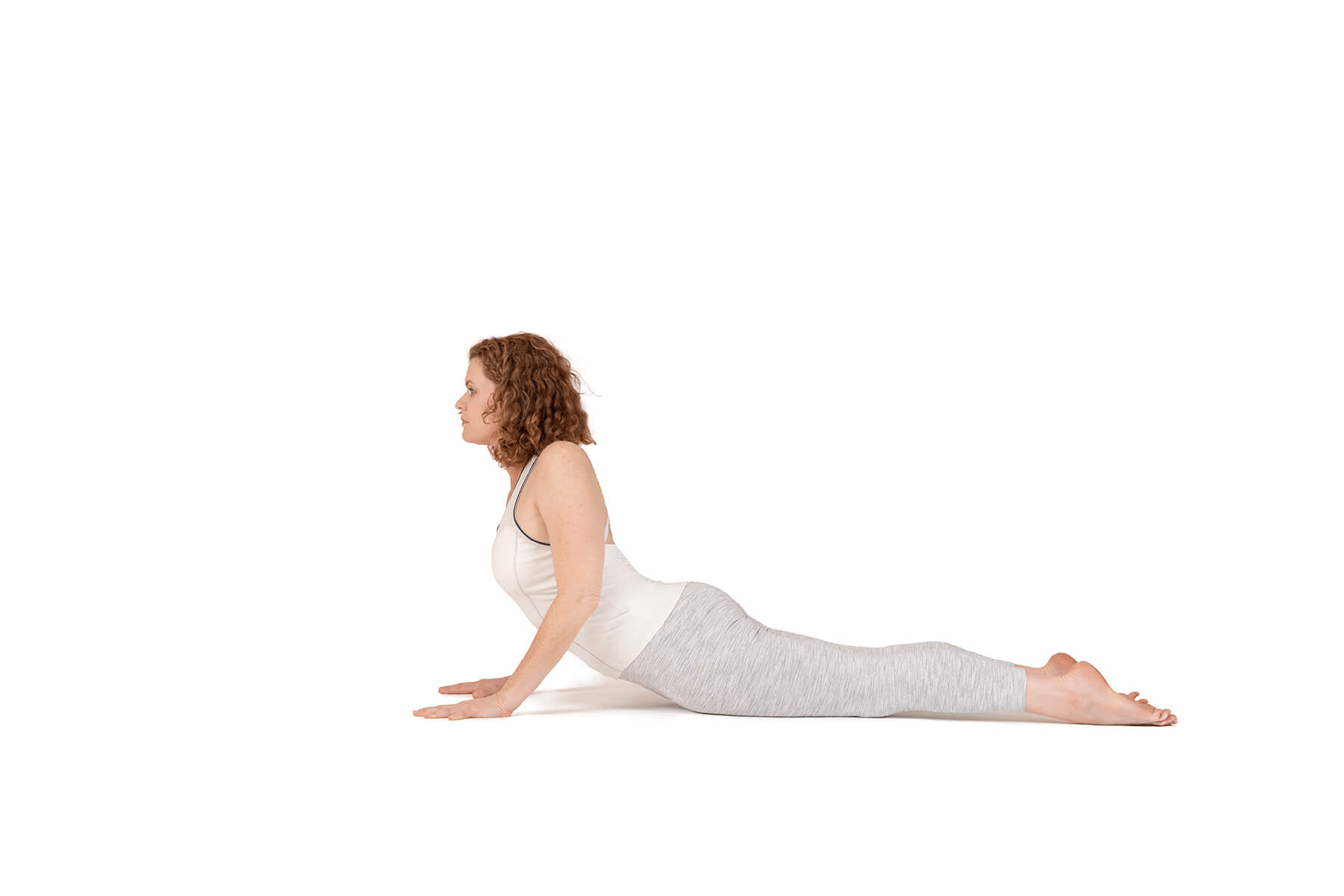
To move from cobra to upward-facing dog, curl your toes under, lift your thighs, and roll forward onto the tops of your feet to bring your chest forward while rolling your shoulders back.
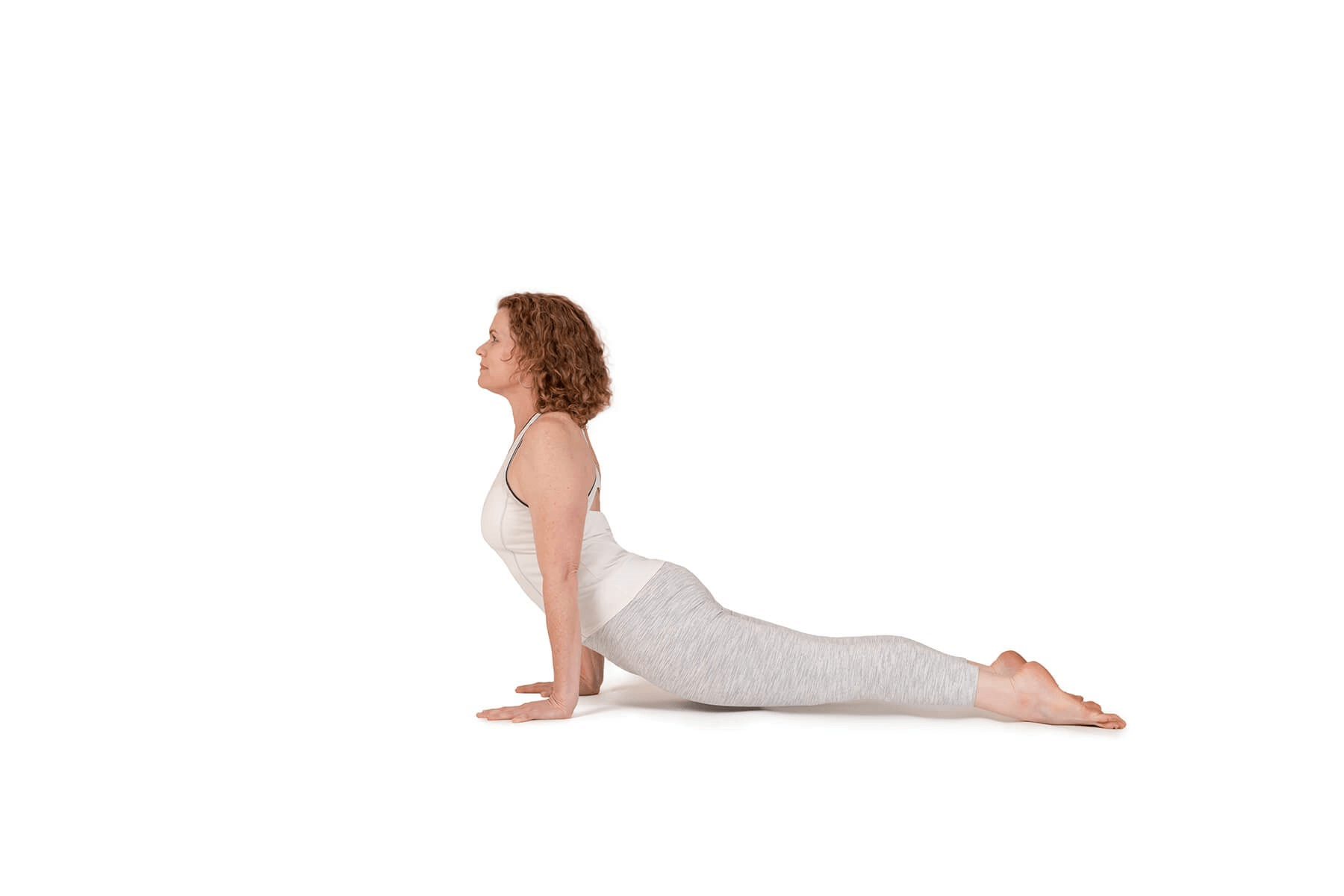
If you tend to fall into your front hip while going deeper in pigeon pose, use a blanket to stabilize the hip so you can balance the two sides of the pelvis more effectively and avoid undue strain on the knee.
4. WHEN IN DOUBT SLOW DOWN, BACK OFF, AND DO LESS
Many of the most common yoga injuries occur from repetitive actions done too fast, too often, and too deep.
It’s worth keeping this in mind when your practice takes you to the edge of your capacity –whether it’s moving at a faster pace, going deeper into a pose then you have before, or working toward a pose that’s challenging or perhaps scary for you.
Slowing down allows you to be more mindful of your actions.
For flexible yogis, backing off from your fullest range of motion allows you to work from a place of greater strength and integration. For stiffer bodies, backing off from trying to achieve the full form of a pose often allows for greater integrity of movement. Doing less allows you to be more fully present and respectful of your body’s limits. (Learn more in Bend Without Breaking: 10 Yoga Poses to Increase Flexibility in Body, Mind, and Spirit.)
5. HARNESS THE POWER OF PRANA – BREATHE!
This one requires no photo, but is all too important. One of the most common mistakes we make in yoga is “forgetting” to breathe. This is especially true when we’re working hard, precisely the moment when the breath can help us the most.
In yoga, the breath is recognized as so much more than the oxygen we breathe. The breath contains prana, the life energy and animating force that enlivens not only our bodies, but our minds as well.
The breath acts like a bridge between what’s going on in our bodies and what’s happening in our minds, bringing the two more in sync. When we’re breathing mindfully, smoothly, and evenly, we’re much more likely to be present to what’s going on for us in the moment.
Therefore, regular and steady breathing not only brings greater vitality to our poses and bolsters our physical effort in postural practice – it also increases our awareness.
The powerful understanding of the breath as the link between mind and body serves us not only in asana practice, of course, but also well beyond our mats. (Learn more in How Conscious Breathing Can Boost Your Yoga Asana Practice.)
6. EMBRACE THE SPIRIT OF INQUIRY… IT’S WHAT MAKES IT YOGA, AFTER ALL
Self-reflective awareness is the ability to observe your thoughts, watch your reactions, and notice your habitual tendencies. Honing these skills are all as much a part of yoga as moving through your Sun Salutations.
Approaching yoga with a spirit of inquiry includes cultivating mindful awareness, developing your proprioceptive and interoceptive capabilities, and becoming more sensitive to the inner dialogue that takes place when you’re practicing. It’s a big part of what makes yoga a mind-body practice and not merely a physical workout.
Inquiry empowers you to notice they ways in which your practice is and isn't serving you physically, mentally, emotionally, and spiritually. And when your practice isn’t serving you, inquiry helps you to shift how you are practicing.
Add the element of reflection to your practice and you’ll expand the benefits of yoga immeasurably. A spirit of inquiry opens the doorway to postural practice as an opportunity for inner discovery and self-knowledge.
7. AND, BY ALL MEANS, TRACK YOUR KNEE OVER YOUR ANKLE
This last one is not really a principle, but it’s such a common misalignment, and one so easily addressed, that it’s worth mentioning. It’s simply this: in all poses where you bend a knee to a square shape, and the other knee is off the floor, make sure that your knee tracks in line with your ankle. In other words, do this:
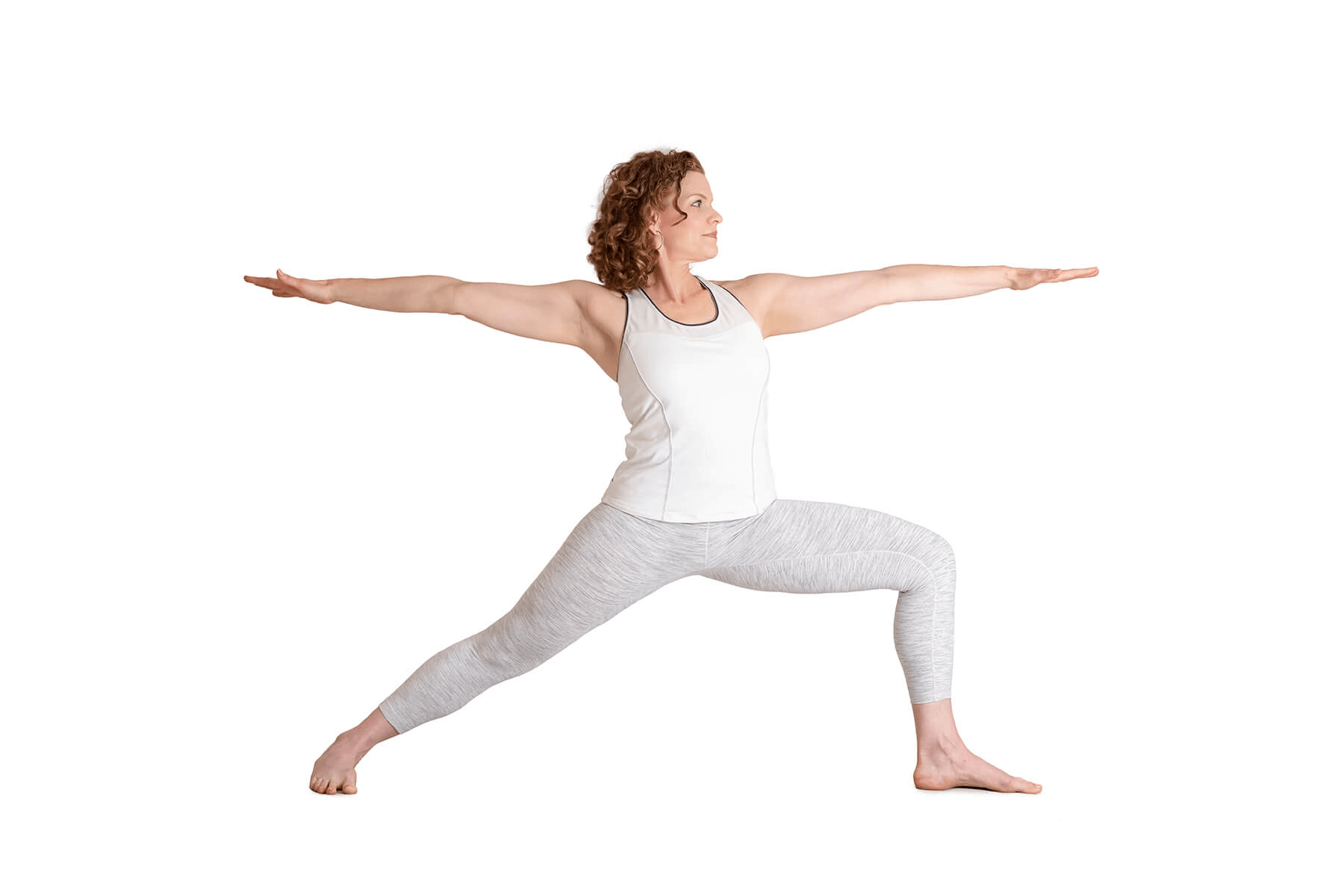
Not this!
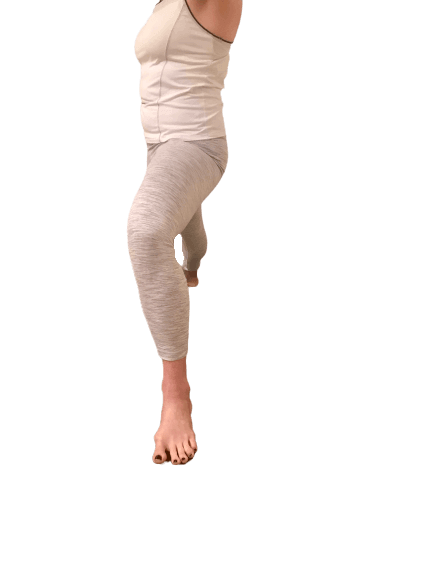
During These Times of Stress and Uncertainty Your Doshas May Be Unbalanced.
To help you bring attention to your doshas and to identify what your predominant dosha is, we created the following quiz.
Try not to stress over every question, but simply answer based off your intuition. After all, you know yourself better than anyone else.